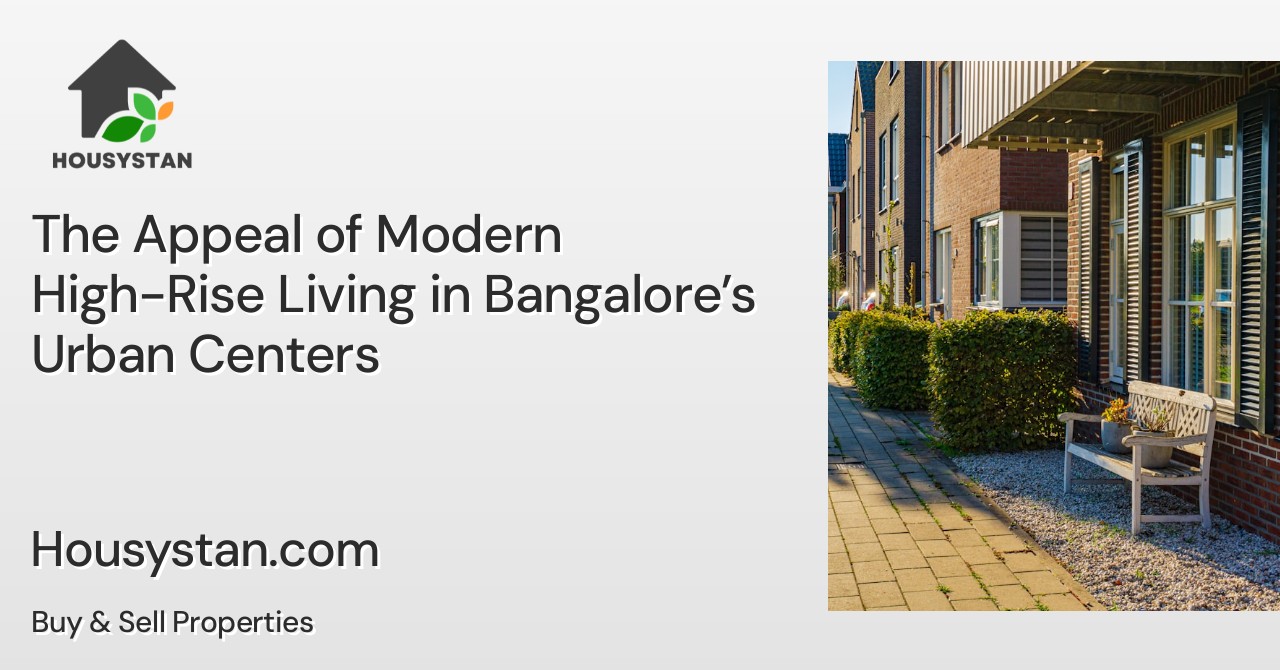The Appeal of Modern High-Rise Living in Bangalore’s Urban Centers
Read latest blogs and articles from Housystan

The Information mentioned here was last updated on:
4/12/2025Bangalore, often referred to as the Silicon Valley of India, is experiencing a remarkable transformation in its urban landscape. Modern high-rise living has emerged as a preferred choice among professionals, families, and investors seeking a blend of comfort, convenience, and luxury. As the city continues to expand rapidly, high-rise apartments in Bangalore’s urban centers offer a unique lifestyle that caters to the needs of its cosmopolitan population.
One of the main attractions of high-rise residences in Bangalore is their strategic location. These developments are often situated in prime areas such as Whitefield, Indiranagar, Koramangala, and Electronic City, ensuring residents have seamless access to leading IT parks, shopping destinations, educational institutions, and healthcare facilities. Proximity to major commercial hubs not only saves valuable commuting time but also enhances the overall quality of life for urban dwellers.
In addition to their sought-after locations, modern high-rise towers are designed to provide a host of amenities that redefine urban living. Residents enjoy features such as state-of-the-art fitness centers, rooftop gardens, infinity pools, dedicated play zones for children, and multi-purpose community halls. These amenities foster a sense of community while offering relaxation and recreation within a secure environment.
- Verified Tenants/Buyers
- Unlimited Property Listing
- Zero subscription/charges fee
Sustainability is another key factor driving the popularity of high-rise living in Bangalore. Many new developments incorporate eco-friendly technologies, including rainwater harvesting, solar power integration, and energy-efficient building materials. These initiatives not only reduce the environmental impact but also contribute to lower utility costs for residents.
Safety and security are paramount in these urban enclaves. Modern high-rises employ advanced surveillance systems, 24/7 security personnel, and controlled access points, ensuring peace of mind for families and individuals alike. The well-planned layouts and modern infrastructure also facilitate better ventilation, natural lighting, and panoramic views of Bangalore’s skyline, enhancing the overall living experience.
With property values consistently appreciating in Bangalore’s urban neighborhoods, investing in a high-rise apartment offers promising returns. Whether you are a working professional, a growing family, or an investor seeking lucrative opportunities, high-rise living in Bangalore’s thriving city centers delivers unmatched appeal and value. Experience the vibrant pulse of the city while enjoying the comfort and sophistication of contemporary urban residences.